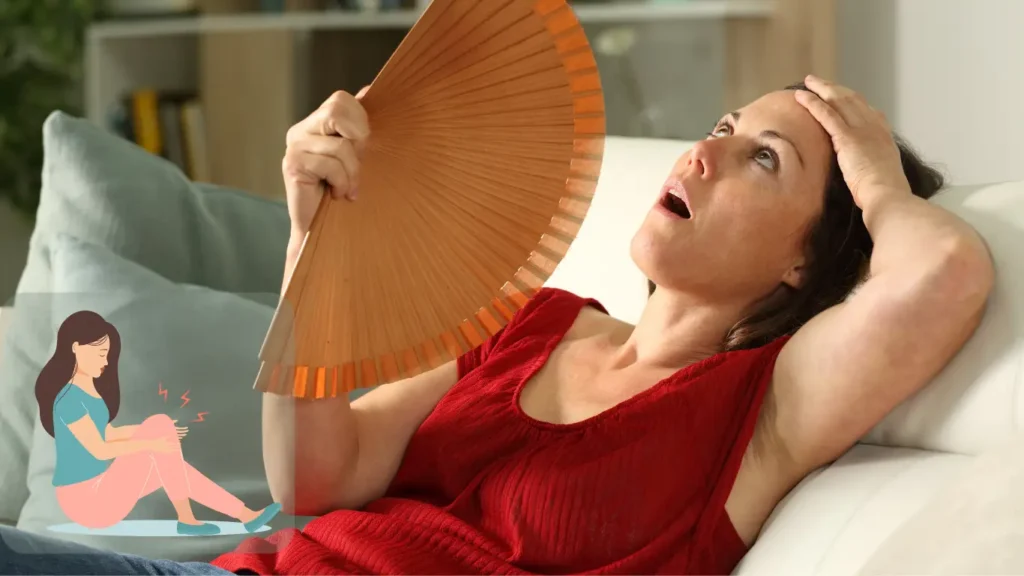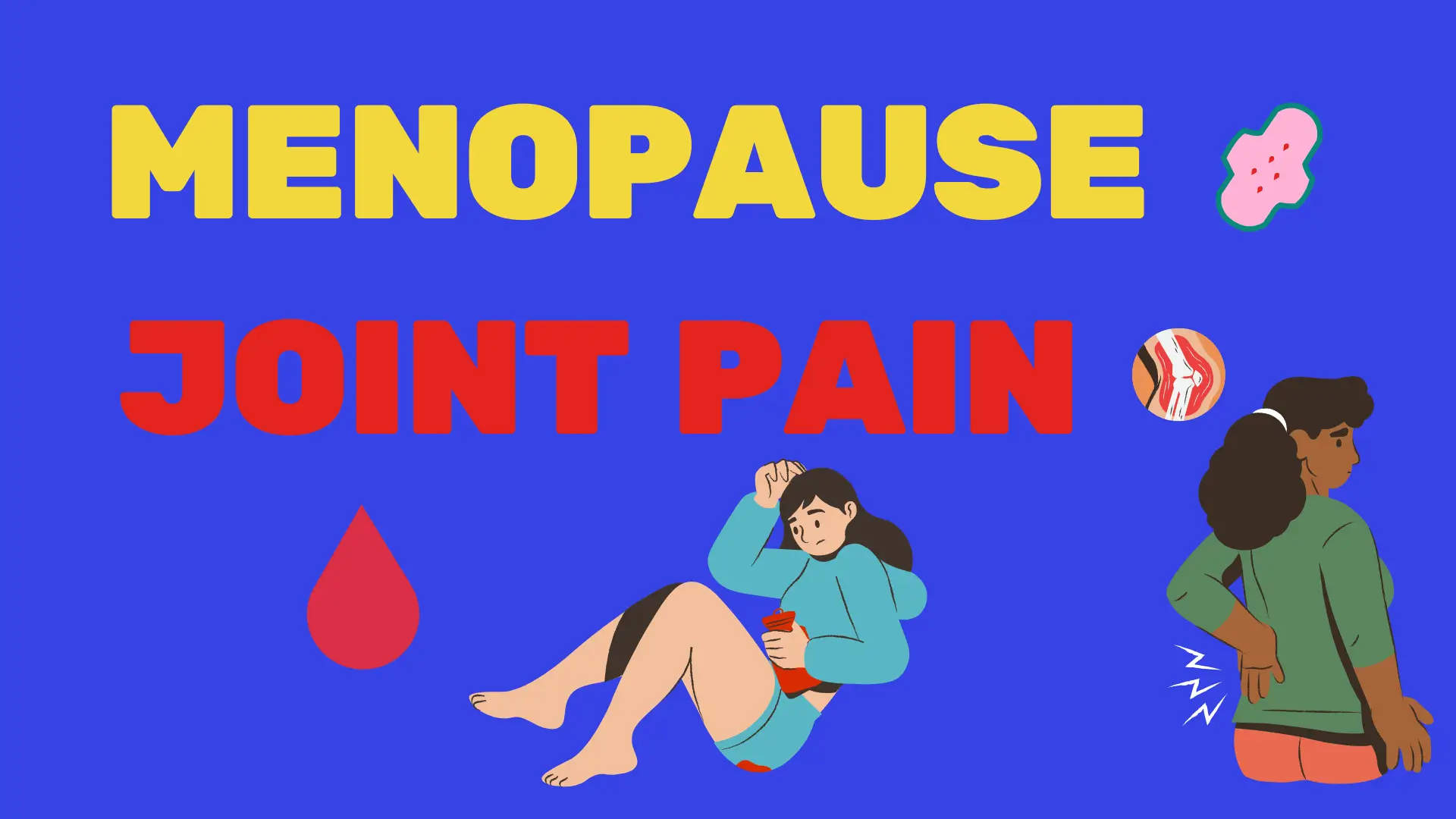Menopause joint pain, a natural biological process, marks the end of a woman’s reproductive years. This transition often brings about a range of physical and emotional changes, including the onset of joint pain. Menopausal joint pain, sometimes referred to as menopausal arthritis, can significantly impact a woman’s quality of life. In this article, we will delve into the causes, symptoms, and effective natural remedies for managing this common menopausal challenge.
- Menopause joint pain: A common symptom experienced by women during menopause.
- Cause: Hormonal changes, primarily a decrease in estrogen levels, contribute to joint pain.
- Symptoms: Joint stiffness, pain, and reduced range of motion.
- Impact: Can significantly affect a woman’s quality of life.
- Natural Remedies: Explore effective natural approaches to manage menopausal joint pain.
Contents
What Causes Menopause Joint Pain?
Menopausal women often experience joint pain due to hormonal changes and the natural aging process. Lower estrogen levels can lead to increased inflammation and stiffness in the joints, while age-related cartilage wear contributes to conditions like osteoarthritis.

- Hormonal Changes: As women approach menopause, a significant decrease in estrogen levels occurs, impacting joint health.
- Role of Estrogen: Estrogen helps maintain joint health by reducing inflammation and keeping joint cartilage healthy.
- Impact of Lower Estrogen: With reduced estrogen, joints may become more prone to inflammation, stiffness, and pain.
- Aging and Joint Pain: Aging contributes to joint pain as the cartilage wears down, leading to conditions like osteoarthritis.
- Combined Effect: The combination of hormonal changes and aging makes joint pain common among menopausal women.
Symptoms of Menopause Joint Pain
Menopausal joint pain can show up in different forms, with common symptoms such as:
- Feeling Stiff: Often more noticeable in the morning or after being inactive for a while.
- Swelling: Joints may appear swollen or feel tender to the touch.
- Aching: A dull or sharp pain in the joints, often exacerbated by movement.
- Warmth: A sensation of warmth around the affected joints, indicating inflammation.
- Reduced Mobility: Difficulty in moving joints freely due to pain or stiffness.
The most commonly affected areas are the knees, hips, hands, and lower back. However, any joint in the body can be impacted.
Natural Remedies for Menopause Joint Pain
Menopause joint pain can be a significant challenge, but there are several natural remedies (immune boost) that may help alleviate discomfort. Here are some options to consider:
Dietary Changes
- Anti-inflammatory diet: Incorporate foods rich in omega-3 fatty acids, such as salmon, flaxseeds, and walnuts.
- Reduce processed foods: Limit consumption of processed foods, which often contain unhealthy fats and additives.
- Stay hydrated: Drink plenty of water to help lubricate joints.
Lifestyle Modifications
- Regular exercise: Engage in low-impact exercises like swimming, walking, or yoga to strengthen muscles and improve joint flexibility.
- Weight management: Managing your weight helps lessen the strain on your joints.
- Stress reduction: Practice relaxation techniques like meditation, deep breathing, or tai chi to manage stress and alleviate pain.
Supplements
- Omega-3 fatty acids: These can help reduce inflammation and improve joint health.
- Glucosamine and chondroitin: These supplements may help support cartilage health and reduce joint pain.
- Vitamin D: Adequate vitamin D levels are important for bone and joint health.
Complementary Therapies
- Acupuncture: This ancient Chinese practice involves inserting thin needles into specific points on the body to alleviate pain and improve overall well-being.
- Massage therapy: Regular massage can help relax muscles, reduce tension, and improve blood circulation.
- Heat or cold therapy: Applying heat or cold to affected joints can provide temporary relief from pain and inflammation.
Here are a few alternative phrasings:
- Contingency: Always consult your doctor before trying anything new. They can give you the best advice according to your condition
- Formal: Consulting a healthcare provider is strongly recommended before starting any new treatment or supplement plan. They can provide customized guidance based on your individual needs and medical background.
- Urgent: Don’t delay! Consult a healthcare professional immediately before starting any new treatment or supplement. Your health is important.
FAQ’s,
What are the most effective natural remedies for menopause joint pain?
Discover top natural remedies such as anti-inflammatory foods, herbal supplements, and lifestyle changes to manage joint pain during menopause.
How can diet help alleviate joint pain during menopause?
Learn how incorporating omega-3 fatty acids, antioxidants, and other nutrient-rich foods can reduce inflammation and joint discomfort.
Are there specific exercises recommended for menopause joint pain relief?
Explore gentle exercises and stretches that can improve joint flexibility and reduce pain associated with menopause.
Can herbal supplements really help with menopause-related joint pain?
Find out which herbal supplements, like turmeric and ginger, are known for their anti-inflammatory properties and their effectiveness in managing joint pain.
What lifestyle changes can reduce joint pain during menopause?
Understand how maintaining a healthy weight, staying active, and managing stress can positively impact joint health and ease menopause-related pain.


Superb post however I was wanting to know if you could write a litte
more on this topic? I’d be very thankful
if you could elaborate a little bit further. Kudos!
Sure! In the next update, it will be available with more details.
Yes! Finally something about 1668.
Nice weblog here! Also your site so much up very fast!
What web host are you the use of? Can I am getting your associate link
in your host? I want my website loaded up as fast
as yours lol
Why visitors still use to read news papers when in this technological world all is available on net?
I know this web site gives quality based
articles and other material, is there any other website which provides these data in quality?
Why are domestic animals so important, the advantages of pets.
How to choose a pet, which pet breed is right for you.how to ensure comfort and care for pets, how to ensure the health of your pet.Interesting facts about pets, why people adore pets.How to teach pets commands, how to train a cat to walk on a leash.
domestic animals and their sounds
my age is 62. facing joint pain in my knee before 3 years back. thanks to admin followed by this article i am able to cure knee pain. Nice blog.
Thank you for your kind words! We’re glad to hear that the article helped you find relief from knee pain. Wishing you continued good health! 😊
2 yrs back I am suffering from Joint pain. Followed by the above remedies now I am Cured.
That’s wonderful to hear! 😊 We’re glad the remedies helped you find relief from joint pain. Wishing you continued good health and wellness! 🌿✨